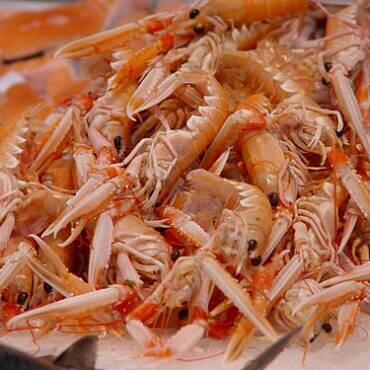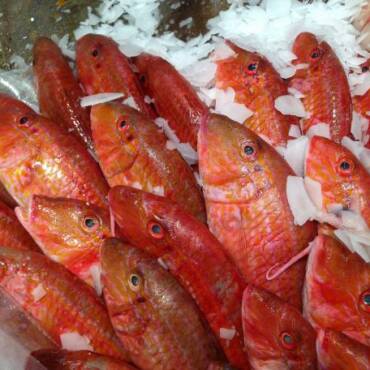Sole: A Delicate and Elegant Seafood Choice
The sole (Solea solea), also known as the common sole or Dover sole, is one of the most refined fish in European cuisine. Prized for its delicate, mildly sweet flavor and firm yet tender texture, this flatfish is a favorite among chefs and seafood lovers. Found in the waters of the North Atlantic, the Mediterranean, and the North Sea, sole is highly valued in French, British, and Mediterranean gastronomy.
🐟 Characteristics & Habitat
The common sole is a bottom-dwelling flatfish that lives in sandy or muddy seabeds, usually at depths of 10 to 200 meters. It is well-adapted to camouflage, using its sandy-brown coloration to blend with the ocean floor. Sole primarily feeds on small crustaceans, worms, and mollusks, contributing to its delicate taste and tender flesh.
🍽 A Culinary Delicacy
Sole is celebrated for its fine, white flesh, which remains moist and firm after cooking. Its subtle, nutty flavor makes it a versatile fish for a variety of recipes. Some of the most famous preparations include:
-
Sole Meunière → A classic French dish where the fish is lightly floured, pan-fried in butter, and served with lemon and parsley.
-
Grilled Sole → Enhances the natural sweetness with a light charred taste.
-
Baked Sole → Often cooked with herbs, butter, and white wine for a flavorful yet delicate dish.
-
Fillets in Sauce → Served with creamy or citrus-based sauces to complement its mild taste.
Sole pairs well with butter, lemon, capers, white wine, and fresh herbs like thyme and parsley.
⚖️ Sustainability & Fishing Practices
Due to its popularity, sole is subject to strict fishing regulations to prevent overfishing. The fish is primarily caught using:
✅ Trawling and gillnets → The most common methods but carefully regulated.
✅ Handline and trap fishing → More sustainable but less widely used.
✅ Minimum catch sizes and seasonal bans → Ensuring young fish can mature and reproduce.
Sole stocks are closely monitored, especially in the North Sea, the English Channel, and the Bay of Biscay, where fishing quotas help maintain population levels. Consumers are encouraged to choose sustainably sourced sole, such as MSC-certified fish.
🌍 Economic & Cultural Importance
Sole is particularly prized in France, the UK, Belgium, and Spain, where it is considered a premium seafood product. It is often featured in high-end restaurants and festive meals, especially in coastal regions where fresh catches are readily available.
France is one of the largest consumers and exporters of sole, particularly through ports in Brittany, Normandy, and the Atlantic coast.
🔮 The Future of Sole Fishing
With increasing environmental concerns, the future of sole fishing depends on sustainable management, aquaculture development, and responsible consumer choices. While wild-caught sole remains the most sought-after, efforts to farm sole are being explored to ensure a steady supply without harming natural populations.
Would you like more details on specific recipes, sustainability efforts, or the economics of sole fishing?




Add Comment